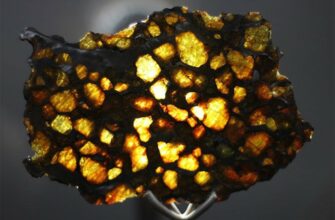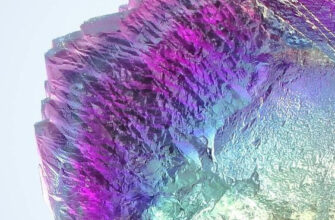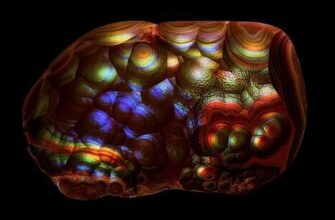Dolomite is a natural mineral (magnesium and calcium carbonate). In appearance, it is a transparent translucent stone with a characteristic glassy luster. The most common shades are gray-white, grayish, yellowish, greenish, pink and black are less common. This beautiful natural material can have interesting patterns and has high physical and mechanical characteristics.
About mineral
Dolomite bears the name of the French geologist Deod Grate de Dolomier, who discovered it in the 18th century in the Italian Alps. The mountains in which the mineral was found became known as the Dolomites. Dolomite has several alternative names: brown spar, rhombic spar, miemite, tarandite, kodatsiyat and ridolphite.

Most of all, the most beautiful specimens of dolomite crystals and intergrowths are valued by collectors. Such instances are mainly used for collections. Stones with an interesting and unusual pattern are highly valued. Dolomite lends itself perfectly to polishing. After that, it acquires a pearly sheen. Hence one of the names - mother-of-pearl spar.
Place of Birth
Dolomite can be found both in the form of solid materials and as part of limestone. A necessary condition for its formation is the presence of salt water. Very often, deposits of this material are found along the coastal strip of seas or lakes with a high salt content. Dolomite deposits are located all over the world.
Countries where mass production of this stone takes place:
- Canada;
- Switzerland;
- Italy;
- Spain;
- USA.
There are also quite rich deposits on the territory of the former CIS:
- Karelia;
- Caucasus;
- Southern Urals;
- the Volga region;
- Vitebsk region, Belarus;
- Donbass, Ukraine;
- Kazakhstan;
- Armenia;
- Uzbekistan;
- North Ossetia.

History
Archaeologists have repeatedly found dolomite beads in Paleolithic sites.
![]()
The trilobite fossil is preserved as an internal cast in a Silurian dolomite from southwestern Ohio, USA.
Belogorsky dolomite marble (from the White Mountain in South Karelia). There are more than 10 varieties of it. All of them have found application in the interiors of the palace ensembles of St. Petersburg. The most beautiful varieties have a soft pink and cherry red color. The Hall "Peoples of Russia" in the Ethnographic Museum of St. Petersburg is lined with this marble.
The Hermitage (St. Petersburg) has a vase made of Nevyansk larchite. A similar vase is in the Ural Geological Museum (Yekaterinburg).
Dolomites
Do you want to see "the most beautiful architectural creation in the world"?
So called the mountains, built of dolomite, Le Corbusier (Le Corbusier), the most famous, respected, revered, famous architect of the twentieth century.
These mountains are located in the Eastern Alps.
![]()
Erosion of dolomite rocks in Murez, Herault, France.
Pink sunrises and cherry red sunsets paint the mountains in incredible shades of red. This rare phenomenon is called "enrosadira" and tourists from all over the world come to admire this beauty.
In addition to admiring the beauties of nature, in the Dolomites there is something of interest to every tourist.
![]()
Cristallo in the Dolomites mountain range near Cortina d'Ampezzo, Italy. The Dolomites were named after the mineral
The resorts of Val Gardena will be of interest to beginner skiers and just family tourists. Marmolada will appeal to lovers and "aces" of skiing.
In the Dolomites is the city of Agordo (Agordo) - the center of international mountaineering.
![]()
Dolomite erosion over weaker shale created the Niagara Escarpment.
In Cortina d'Ampezzo, aristocrats and lovers of a luxurious lifestyle gather.
In general, if you go to the Dolomites, you will not regret it.
Origin of the name
- It was in the Dolomites that he conducted geological and mineralogical research Dieudonnet de Dolomieu (Dieudonne Dolomieu). This French geologist enjoyed the magnificent views of this corner of Italy, and studied the properties and origin of the mineral from which these mountains are composed.
- In honor of the geologist, the mineral (and after it the rock) was named dolomite.
Origin
There are three types of finding a mineral in nature:
- Layered dolomite rocks. Sometimes it occurs in such large masses that it forms a real rock, consisting of a single mineral.
- Occurrence of the mineral in the form of lenses, spots, stocks among limestones.
- The third type is the finding of veins and veins that cut through the host rock, crusts on cavities, and dolomite geodes.
The first two types form dolomite rocks. The third gives accumulations of a mineralogical character.
Interestingly: the most valuable types of dolomite were formed in contact with sea water. This is one of the hypotheses of the origin of dolomites.
But in the dolomites, as in the maternity ward, gems are found.
So, in Macedonia, pink translucent corundums are found in dolomite marbles.
In the Baikal dolomites, there are frequent finds of noble spinel of red and blue color.

In the dolomites at the Putin Bay deposit (Lake Erie), crystals of celestite were mined - a pale blue color.
Jewel-quality dolomite crystals are found in hydrothermal veins and metasomatites.
Interestingly: The purest fluorite crystals are found in dolomites.
physical properties
| <font><font>Materials</font></font> | Descriptions |
|---|---|
| Formula | CaMg(CO3)2 |
| Impurity | Fe, Mn, Co, Pb, Zn. Manganese (up to a few percent). |
| Hardness | 3,5-4 |
| Density | 2,9 g / cm³ |
| Cleavage | Perfect. |
| Refractive index | 1,679–1,681; nε = 1,500 |
| Syngonia | Trigonal. |
| Brilliance | Glass, frosted. |
| Color | Light brown, rarely white, yellowish gray. |
Dolomite has the following characteristics:
- moisture resistance;
- durability;
- aesthetics.
But at the same time he:
- fragile;
- easily scratched;
- dissolves poorly.
Dolomite does not melt under the influence of high temperatures, it cracks. In acid, the mineral dissolves slowly. But at the same time, it is so soft and fragile that it can be scratched with a simple sewing needle.
Medicinal properties
Dolomite contains a fairly large amount of ionized calcium. And, calcium is an important component of the cells and tissues of the body.
The effect of calcium on the human body:
- It has a positive effect on the acid-base balance.
- Reduces the risk of cardiovascular disease.
- Normalizes blood pressure.
- Normalizes blood sugar levels.
- Prevents osteoporosis.
- Reduces the likelihood of urolithiasis.
- Relaxes muscles.
- Increase life potential.
- Increase stress resistance.
Magical properties
Dolomite is widely used to make amulets for men. He gives: assertiveness, willpower, success, as well as attractiveness in the eyes of women.
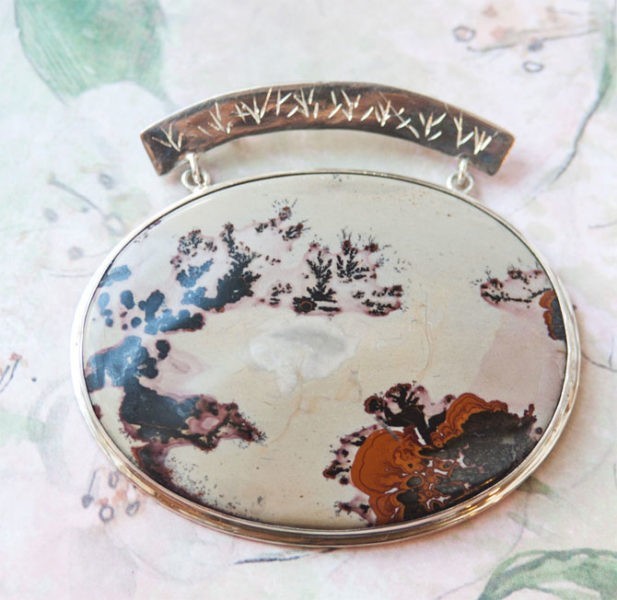
A man who possesses such an amulet becomes a knight and acquires qualities that attract a more beautiful sex to him. Esotericists advise using dolomite amulets or jewelry as a means to strengthen bones, normalize blood pressure, and relieve joint pain. If a person is tired and has lost a lot of strength, the stone will help him regain vigor and energy.
For magical purposes, dolomite is used not only as an amulet, it can also be used to inlay household items, figurines, caskets and other things that people often use.
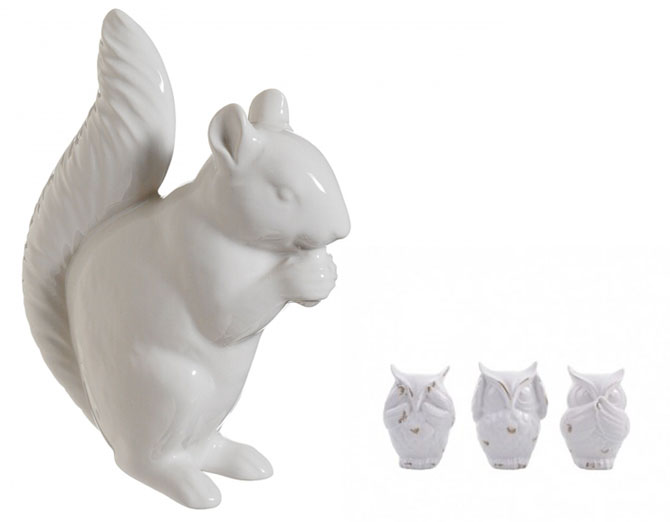
According to healers, if a man wears a stone on his little finger or ring finger of his right hand, he becomes more reasonable, attentive, responsible. Jewelry with dolomite is undesirable for women to wear (with some exceptions), as its pronounced male energies can harm her.
Dolomite is a very good gift for a young unmarried guy, as it enhances masculine qualities, helps to become restrained and responsible. People who are contraindicated in wearing dolomite are people with a quick temper, aggressive personalities. And also wearing dolomite is not recommended for managers. This can provoke aggressiveness, conflict, tyranny on his part.
Applications
The excellent properties of the mineral have long been appreciated by builders. Fireproof, wear-resistant, durable. It is indispensable in construction. Building mixes usually contain sand as a filler. It's cheap and cheerful. But (secretly). Want the best material for decorating your home? Take materials where there is dolomite.
Are you a happy owner of a cottage or a house, can you afford not only beds with potatoes and vegetables? Then dolomite crushed stone is useful for landscape design.
Polished mineral is used to make lining of fireplaces, pools, arches.
![]()
Do you have repairs? Pay attention to the line of products containing dolomite:
- adhesives;
- putties;
- plasters;
- Self-leveling floors.
They compare favorably with good adhesion, plasticity, minimal shrinkage.
Dolomite tiles, blocks, slabs are widely used for:
- landscape design.
- Interior design of buildings and their facades. For interior work, polished tiles are more often used.
- As a floor covering in public and private buildings.
To note: there are very few flaws in the mineral. This is a rather high price and a meager color palette.
In addition, the mineral uses:
- metallurgical industry;
- chemical industry;
- rubber production;
- construction industry.
Mineral and stone cutters are used to create small glyptics. There are attempts to create jewelry, but these are rather the delights of “amateur craftsmen”. On their sites you can find earrings, beads, bracelets made of dolomite. But these productsfor an amateur».
Jewelry with mineral
As a rule, dolomite jewelry is handmade, as there is no mass production of jewelry with this stone. And in jewelry, it is not used because of its fragility and softness.
However, in the works of private masters, dolomite is actively and successfully used. Basically, dolomite jewelry is made in ethnic style. This means they are not for everyone. Such jewelry is preferred by people who love a similar style of dress and lead a certain lifestyle. These are people of creative or free professions.
Necklace
Such necklaces are often made of leather, suede, beads. But its main decoration is processed dolomite. Such things are exclusive (made in a single copy). Therefore, they are not cheap. For example, an author's necklace with dolomite costs from 20 to 60 euros. And sometimes the price reaches up to 200 euros. It all depends on the materials used.
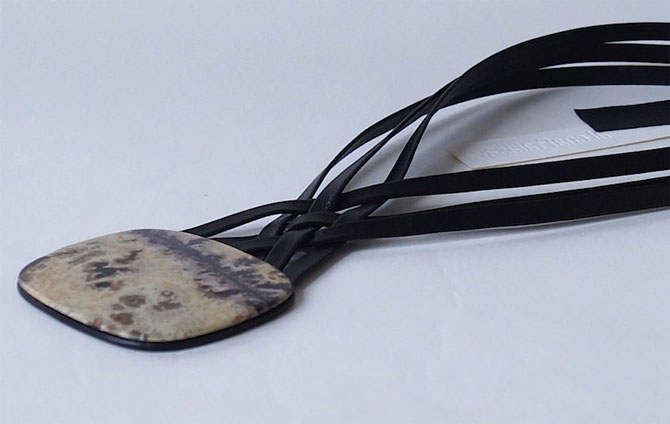
Beads
This is a beautiful and unique piece of jewelry. In most cases, landscape dolomite is used for the manufacture of beads, it has a color and pattern. Sometimes the patterns are so whimsical that they resemble a landscape or oriental painting. No bead is the same.
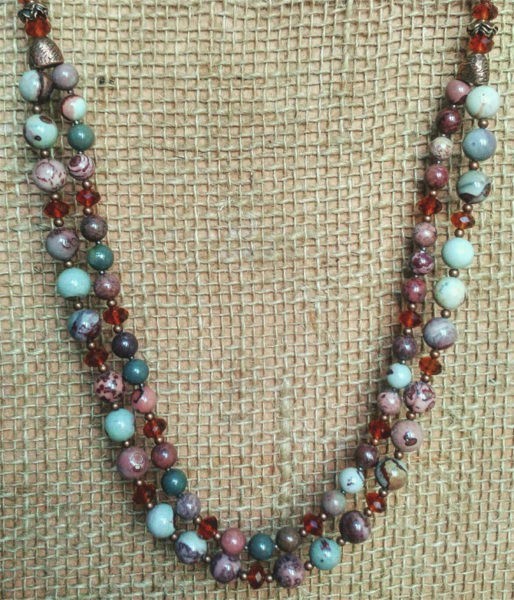
And at the same time, they may have geometry flaws, natural roughness, chips and crevices. Such flaws are not a disadvantage, but a highlight of a natural stone.
Very popular in the manufacture of beads is the coloring called "Golden Autumn", where yellow spots are scattered on a light gray background. Sometimes the beads are sent with silver, copper or white gold. Such jewelry can cost from 40 to 300 euros. Frame matters a lot here.
Earrings
For example, copper-framed dolomite earrings cost 15 euros. The same earrings in a silver frame cost 80 euros. And gold earrings with polished landscape dolomite cost from 120 euros, depending on the amount of gold used and the size and number of stones. In the manufacture of earrings, unusual specimens of dolomite are also used.

Reference. A stone with a "realistic image of the landscape" is especially popular. Such a landscape on the stone was painted by nature itself without the participation of human hands. It is difficult to get such specimens, since they are mostly in private collections.
You can buy or order such jewelry only from private craftsmen (authors) who work with this natural material. By agreement, you can discuss the design, cost, materials from which the product will be made.
Dolomite crockery
Dolomite utensils have several features that distinguish them from porcelain or faience:
- brighter;
- cheaper;
- more fragile;
- less heat resistant;
- lighter.

How to navigate when buying dolomite dishes:
- Dolomite dishes are lighter than porcelain or faience dishes. But at the same time, it is also more fragile. Therefore, when buying, you should choose heavier products. They are stronger and last longer. As a rule, the price of such products is slightly higher.
- When buying, you can lightly tap on the product. If the sound is sonorous and rolling, then the clay is burned evenly and such a product can be bought. A dull sound indicates that the product is of poor quality or the manufacturing technology is violated.
- Suspicious cheapness. Too cheap products should alert. Sometimes, instead of natural dolomite dishes, you can buy a synthetic fake. In order to further reduce the price, natural material is replaced with synthetics. Such a product can be distinguished by a characteristic chemical smell. If such a smell is present, then you have a fake in front of you and you should not buy it.
Attention! Dolomite dishes do not tolerate high temperatures; boiling water cannot be poured into it, this will lead to the formation of microcracks. Such products are suitable only for cold products or for interior decoration.
The properties of dolomite, its price, various colors make this stone a versatile material. If earlier dolomite was used exclusively in construction, now it is used in architecture, the chemical industry, medicine, and metallurgy.
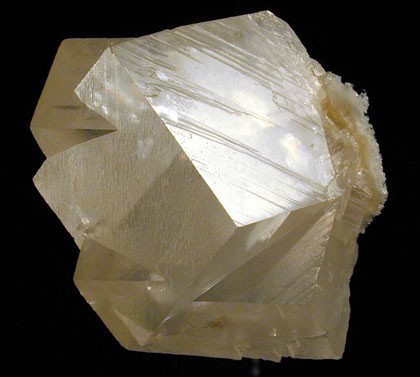
Dolomite is perfect for making decorative items and jewelry. The stone has positive energy and has a beneficial effect on a person. It is easy to care for, and the product looks original.
Varieties and colors of stone
Dolomite can have different shades depending on the inclusions of various components:
- Pink. This color is acquired due to impurities of manganese. The name of this variety is grinerite.
- Lilac. This color will have dolomite containing an admixture of cobalt. Its name is cobalt dolomite.
- Black color. A rather rare variety of dolomite has a black color and is called teruelite.
- Dolomite acquires a green color due to the admixture of iron and nickel. The name of such a stone is taraslit.
- Dolomite acquires a reddish tint due to the admixture of iron. The variety is called ferrodolomite.
- Ankerite brown. Calcium (ferruginous) dolomite with an admixture of calcite. Color defines iron.

- Mangandolomite (greinerite) — pink dolomite with manganese content up to 23%.

- cobalt dolomite, pink colour. Cobalt admixture up to 3%.

- Chrome dolomite — green, painted with chromium oxide.

- Black dolomite owes its color to inclusions of hard bitumen.

- Algal dolomite. They belong to biogenic species. In nature, they stand out in the form of balls or loaves.

- Silicified dolomite.

- Dolomite marble.

- Serpentinized dolomite.

- Dolomitic breccia.

How to distinguish a natural stone from a fake?
It is difficult to distinguish a natural stone from a fake. As for dolomite, only a specialist can do this. And even he will be able to distinguish a natural mineral only with the help of chemical reagents and only in laboratory conditions. This will require hydrochloric acid.
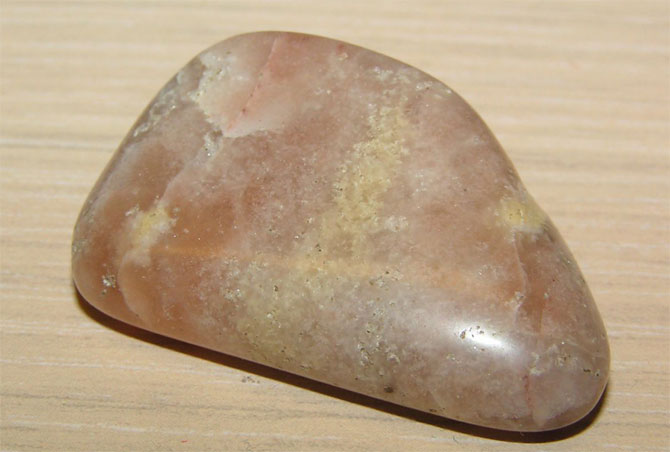
Getting on the surface of an artificial stone, it boils. This results in the release of carbon dioxide. Natural dolomite does not actively interact with hydrochloric acid, the reaction practically does not occur.
Attention! If you have any doubts when buying a dolomite product, you should smell the product. If there is even the slightest chemical smell, then you have a fake.
Care of products
In order for the products to serve for a long time and look good, several conditions must be observed:
- proper storage;
- regular care;
- appropriate appeal.
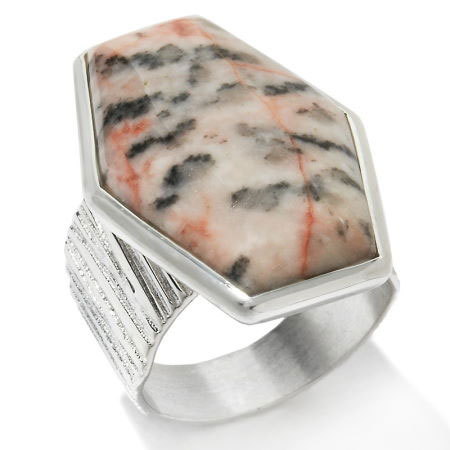
Regular care (weekly) involves wiping the surface with a damp cloth made from natural fibers. As a detergent, you can use special polymer liquids with wax elements. They will provide protection, polish and will not affect the color or appearance of the stone. Such products do not leave any traces after processing.
Once a month, it is advisable to use mastics for natural stones, which will ensure the closure of microcracks and will help strengthen the mineral (it will last longer).
After processing, it is recommended to cover the surface with a wax composition, which will prevent moisture from entering the middle of the wall product, fill in microcracks, and help maintain aesthetics for a long time.
Compatibility with zodiac signs
(“++” - ideally fits perfectly, “+” - can be worn, “-” - categorically contraindicated):
| Zodiac sign | Compatibility |
|---|---|
| Pisces | Wisdom, common sense, rationalism. |
| Aries | Increasing self-criticism, restraint. |
| Taurus | Positive, good mood, optimism. |
| Gemini | Cheerfulness, activity, resistance to stress, reduced fatigue. |
| Cancer | — |
| a lion | Restraint prudence, adequacy. |
| Virgo | Activity, increased vitality. |
| Scales | Self-confidence, decisiveness. |
| Scorpio | Weightedness of decisions. |
| Sagittarius | Rational behavior, increased sexuality. |
| Capricorn | Enterprise. |
| Aquarius | — |


